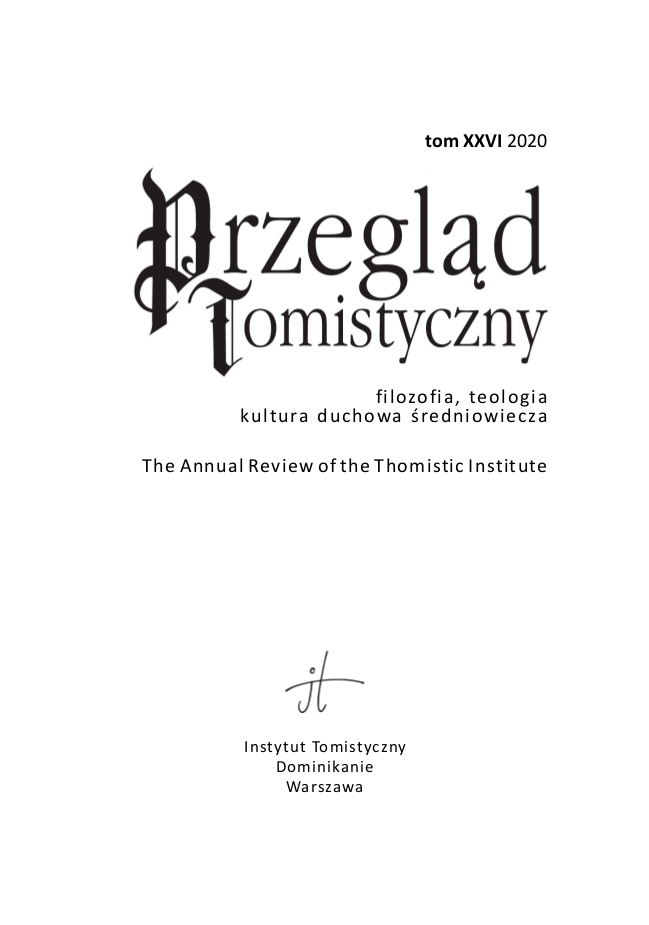MAREK PORWOLIK, Józef Maria Bocheński’s Formalizations of the “Third Way” of St. Thomas Aquinas

Volume XXVI: 2020
Philosophy — Theology — Spiritual culture of the Middle Ages
ISSN 0860-0015
e-ISSN 2544-1000
SUMMARY
The beginning of the 20th century was a time which saw the dynamic development of logic and mathematics. It brought new formal and methodological tools that were used in scientific activities also in other scientific disciplines. The Cracow Circle, which was active in the 1930s, took as the main goal of its activities the assimilation of its contemporary achievements in the field of logic in Catholic philosophy and theology. Apart from Father Józef Maria Bocheński (1902–1995), the Circle included Father Jan Salamucha (1903–1944), Jan F. Drewnowski (1896–1978), and Bolesław Sobociński (1906–1980).
Father Bocheński came across the issue of a formal analysis of the five ways of St. Thomas Aquinas for the first time while writing a review of the work of Fr. Salamucha, entitled Dowód „ex motu” na istnienie Boga (The Proof “ex motu” for the Existence of God). This work appeared in 1934, and the aforementioned review a year later. In this review, there are not only comments on the approach to the prima via presented by Fr. Salamucha, but also his own solutions in this area. At that time, however, Father Bocheński did not undertake his own comprehensive analysis of Aquinas’ arguments. Fr. Bocheński’s analyses of the five ways known and published so far come only from the 1980s and 1990s. The first of these was presented in 1989 in the article Die fünf Wege (The Five Ways) and the third in the book Gottes Dasein und Wesen. Logische Studien zur Summa Theologiae I, qq. 2–11 (God’s Existence and Essence. Logical Studies on Summa Theologiae I, qq. 2–11) published in 2003. Manuscripts of this book (German from 1989, Polish from 1993) contain the chronologically second analysis. The book contains numerous corrections (also in the formalisms) which were made by the publishers, but these were not authorized by Father Bocheński.
The aim of this paper is to conduct a comparative analysis of Father Bocheński’s three approaches to the holistic research on the third way of St. Thomas Aquinas. It will allow us to capture the changes made in the particular approaches to Aquinas’ arguments, but they will also make public the archival materials from the manuscripts of Gottes Dasein und Wesen. To date, Father Bocheński’s analyses of the other four ways have been analyzed in a similar way. Although the method of applying formal methods in philosophy and theology has changed significantly since the time of Father Bocheński (today it is more than a logical analysis and a paraphrase of the source text into the formal language), the works of Father Bocheński are still a permanent reference point for these contemporary analyses. In this way, they are not only the implementation of the program of the Cracow Circle or Father Bocheński’s Program studiów o Bogu (The Program of Studies on God), but also an important link in the formation of the analytical method in the field of philosophy and theology. Despite the fact that Father Bocheński’s texts on the quinque viae contain a lot of questionable places and inaccuracies, even for that latter reason it is worth presenting them critically today. One cannot neglect their contribution to the understanding of Aquinas’ arguments and concepts appearing in them, such as movement, cause, necessity, possibility, or the extreme (first) element for a given relation.
